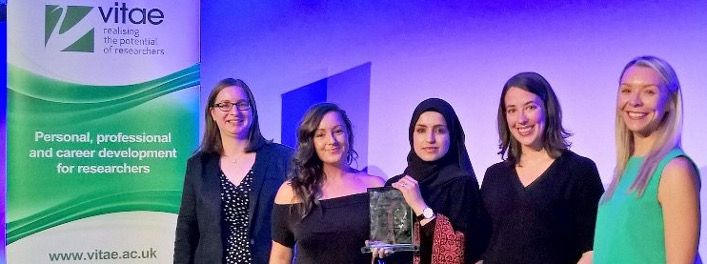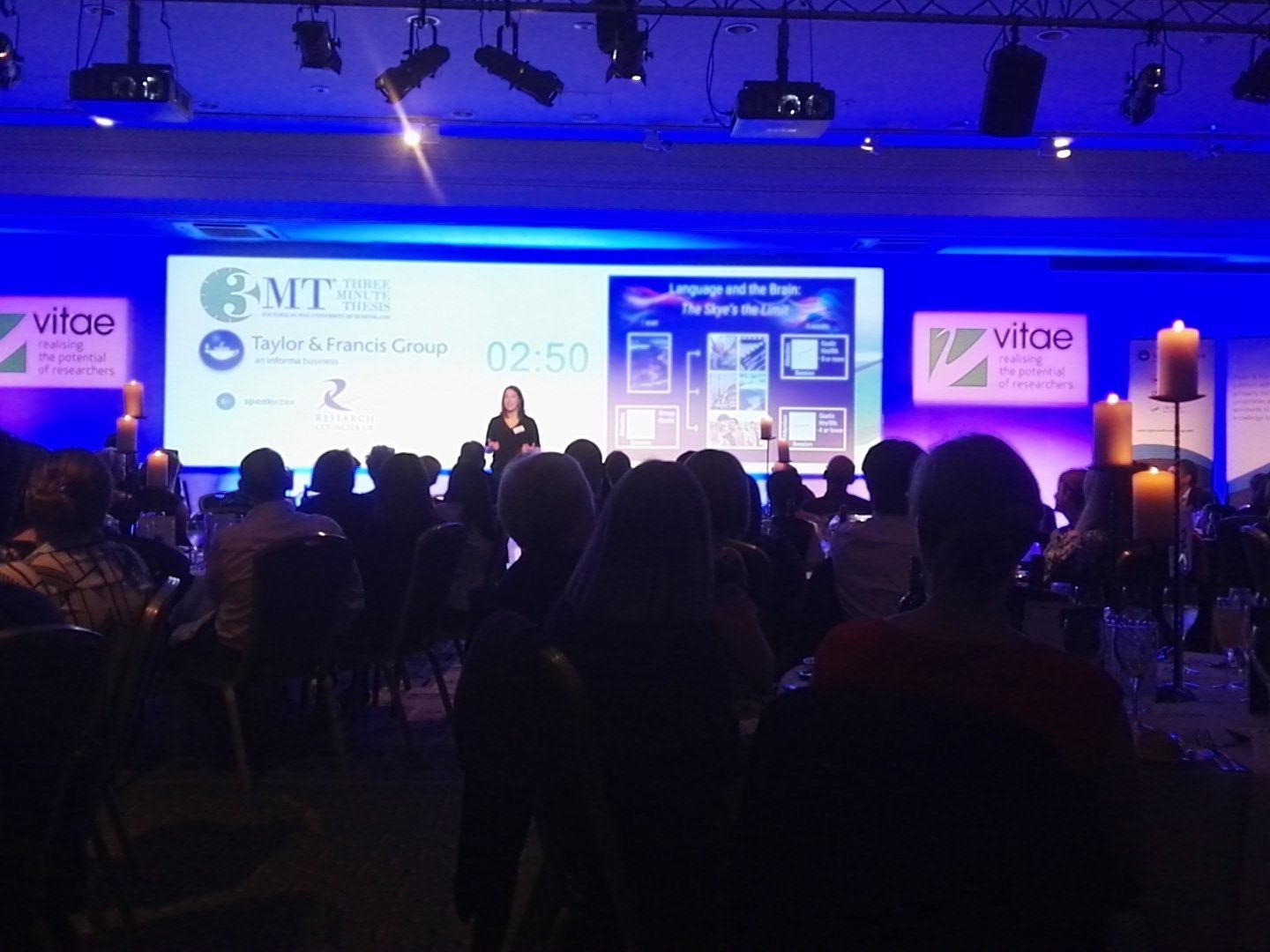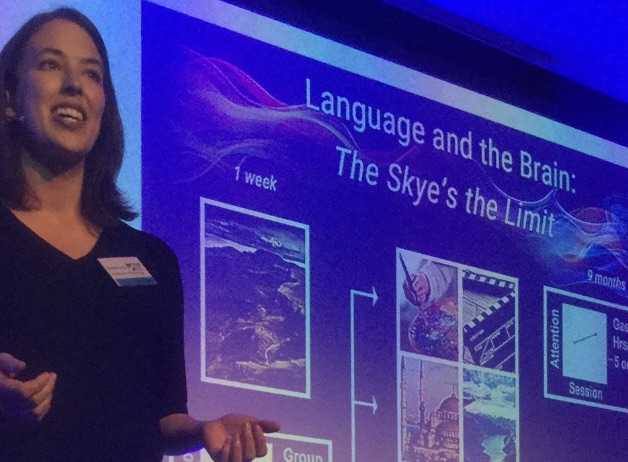
As researchers, it’s important to share our findings with the public. However, when asked to explain what we do and the implications of our work, it can be difficult to come up with an engaging response on the spot. In fact, if you’re like me, the experience can be quite daunting. You might ask yourself:
How much background do they need? Would they understand this terminology? How can I give a bigger picture explanation that might interest them?
Here’s where the 3 Minute Thesis (3MT) comes in. The 3MT provides a unique opportunity for PhD students to showcase their research through a short, captivating pitch for a lay audience. In the competition, you’re given a maximum of 3 minutes and 1 slide to summarize years of specialized work into a compelling presentation for a diverse public of all ages and backgrounds. To prepare for it, you consider the above questions and more, as you craft a talk you hope will be relevant and interesting to all.
Almost a year after I participated in the 3MT, I am still benefiting from the practical skills, applications, and opportunities the competition brings, and hope others will too. Below I share some of these with you.

- The competition allows you to interact with diverse audiences. At each stage of the 3MT, your work will reach an increasingly wide audience, allowing for the dissemination of your findings and the opportunity to engage with the public after the presentation to answer questions, share ideas, and receive interesting feedback that could translate into future research.
What’s more, the competition is video recorded and can be shared with people all over the world, leading to more interaction with the public as well as potential international collaborations with other researchers.
- It’s an opportunity to enhance your public speaking skills.
The 3MT encourages you to face the anxiety that often accompanies public speaking and present your work in an engaging manner. Throughout the competition, you learn to feel more comfortable speaking in front of a crowd and develop techniques to manage nerves and interact with the audience.
As the competition involves various rounds, you may have the chance to present your research a handful of times in varied environments; this type of practice helps you to become a poised, effective public speaker, a valuable skill that can be used in any future career path you take.

- You’re able to explain your research to anyone at any time.
Remember the scenario mentioned at the start? We’ve all been there. Hopefully, after the 3MT, you’ll feel much more comfortable explaining your work on the spot.
Leading up to the 3MT, you’ll spend hours figuring out what the most important aspects of your research are, how your work relates to others, and what kind of real-world impact it has. From there, you’ll memorize your pitch and present it. After this experience, you should be able to confidently sum up what you do and why it’s important any time you’re asked about it. You may even get more questions after you start explaining it… which is exactly what you would hope for—an introduction to your research as an invitation for further discussion.
The 3MT has been one of the highlights of my doctoral career and I encourage any PhD student to sign up for it. For more information on the competition, visit the IAD 3MT web page.



